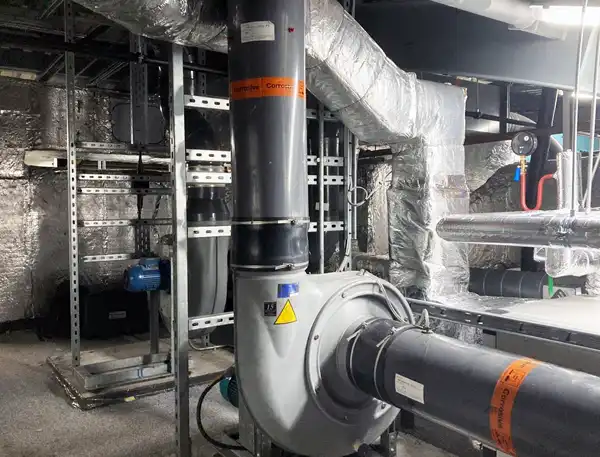
Local Exhaust Ventilation (LEV) Testing
Ensuring Workplace Safety & Compliance
What is LEV Testing?
Local Exhaust Ventilation (LEV) systems are essential for controlling airborne contaminants, such as dust, fumes, vapours and gases, in workplaces. These systems protect employees from exposure to harmful substances that can cause respiratory issues and long-term health conditions. However, for an LEV system to function effectively, it must be regularly tested and maintained.
LEV testing is a Thorough Examination and Test (TExT) of your LEV system(s) to ensure it is operating efficiently and in compliance with legal requirements. Under the Control of Substances Hazardous to Health (COSHH) Regulations 2002, it is a legal requirement in the UK for all LEV systems to be tested at least once every 14 months.
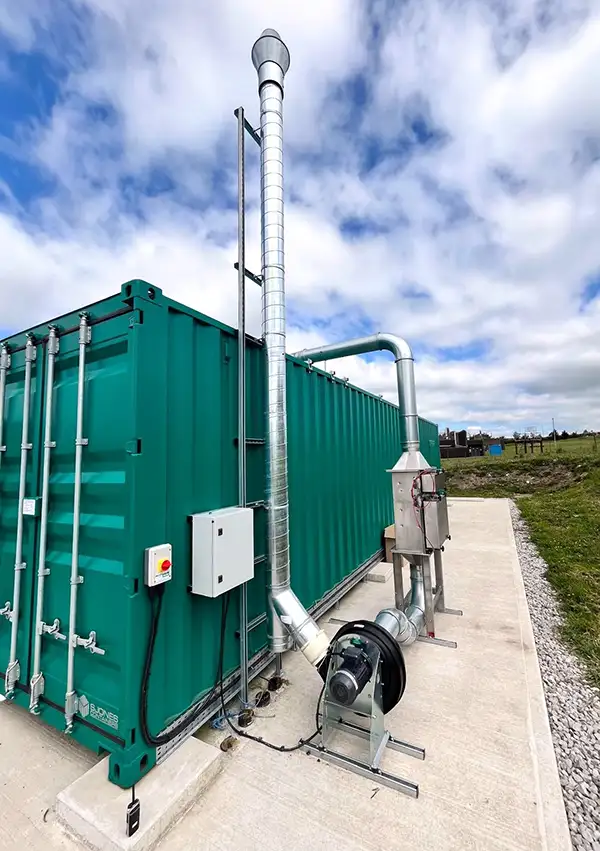

Why is LEV Testing Important?
- Legal Compliance - The Health and Safety Executive (HSE) requires businesses to conduct LEV testing to comply with COSHH regulations. Failure to do so can result in fines and/or legal action.
- Worker Health & Safety - Effective LEV systems prevent employees from inhaling dangerous airborne particles, reducing the risk of occupational diseases such as lung disease, asthma, and chronic bronchitis.
- System Efficiency - A well-maintained LEV system ensures that harmful contaminants are effectively removed, leading to a safer and more productive work environment.
- Cost Savings - Regular LEV testing and maintenance helps prevent costly system breakdowns, reduce energy consumption, and extend the lifespan of LEV equipment.
Our team of 20+ LEV technicians are certified and experienced in LEV testing across a varied number of sectors.
Get in touch nowHow Often Should LEV Systems Be Tested?
Whilst the maximum time between tests of LEV systems is set down in COSHH, and for most systems is a maximum of 14 months, if wear and tear on the LEV system is liable to mean that system effectiveness will degrade between tests, more frequent and thorough examinations and tests may be required.
The table below provides legal maximum intervals for thorough examination and testing of LEV plant used in certain processes (COSHH Schedule 4).
| Process | Minimum frequency |
|---|---|
| Processes in which blasting is carried out in or incidental to the cleaning of metal castings in connection with their manufacture | 1 month |
| Jute cloth manufacture | 1 month |
| Processes, other than wet processes, in which metal particles (other than gold, platinum or iridium) are ground, abraded or polished using mechanical power in any room for more than 12 hours a week | 6 months |
| Processes giving off dust or fumes in which non-ferrous metal castings are produced | 6 months |
What Does an LEV Test Involve?
A comprehensive LEV test includes the following, where applicable:
- Visual, Structual and Physical Inspection
Examination of key parts of the system - hoods, ductwork, filters, fans (including belts if applicable), attenuators and airflow alarms for any physical damage, corrosion, or blockages - ensuring they are operating effectively. - Airflow & Performance Measurements
- Using the appropriate specialised calibrated instruments to measure airflow (Quantitive) velocity, static pressure, and system efficiency.
- A review of the systems technical performance to check conformity with the benchmark performance in the commissioning report (if available).
- Identifying any reduction in performance that may affect the ability of the hood to offer adequate contaminate control and subsequent operator protection.
- Exposure Control Assessment
- Evaluation of how effectively the LEV system is controlling the airborne contaminants.
- Ensuring that hazardous substances are being safely extracted at their source - this can be via smoke and/or dust lamp test (Tyndall Beam), if applicable.
- Conducting a smoke or dust lamp (qualitative) test to visually assess how contaminants move within the system.
- Detailed LEV Test Reports
Providing a comprehensive report outlining the system performance, compliance status, and any potential recommendations for improvements. Documentation must be fit for any potential HSE inspections/audits.
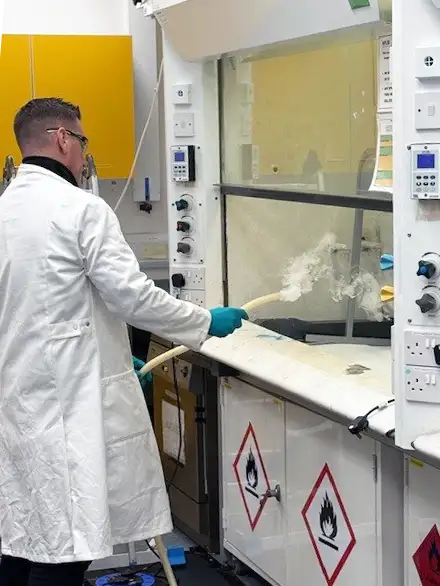

"Clean Air Technologies will ensure your LEV system meets all legal and regulatory requirements."
"Clean Air Technologies will ensure your LEV system meets all legal and regulatory requirements."
A well-maintained LEV system ensures that harmful contaminants are effectively removed, leading to a safer and more productive work environment.
Get in touch nowLEV Logbooks
All LEV (Local Exhaust Ventilation) systems require a logbook to keep record of regular checking, maintenance, and repair, and these should be provided by the manufacturer of the system/device upon hand over.
The logbook contains:
- Schedules for regular checks and maintenance
- Records of regular checks, maintenance, replacements, and repairs
- Checks of compliance with the correct way of working the LEV system
- The name of the person who made the checks
You should also have a user manual with your system which should cover how to use the device, how to maintain it, spares available and a list of things that could go wrong. The manual helps as it assists in the examination and test of the LEV system.
Who Needs LEV Testing?
LEV testing is required for businesses and industries that use ventilation systems to control airborne contaminants. Clean Air Technologies currently undertake LEV testing in a number of these sectors. These include:
- Manufacturing & Engineering
- Woodworking & Construction
- Pharmaceutical & Chemical Industries
- Life Science
- Food Production
- Automotive & Aerospace
- Educational
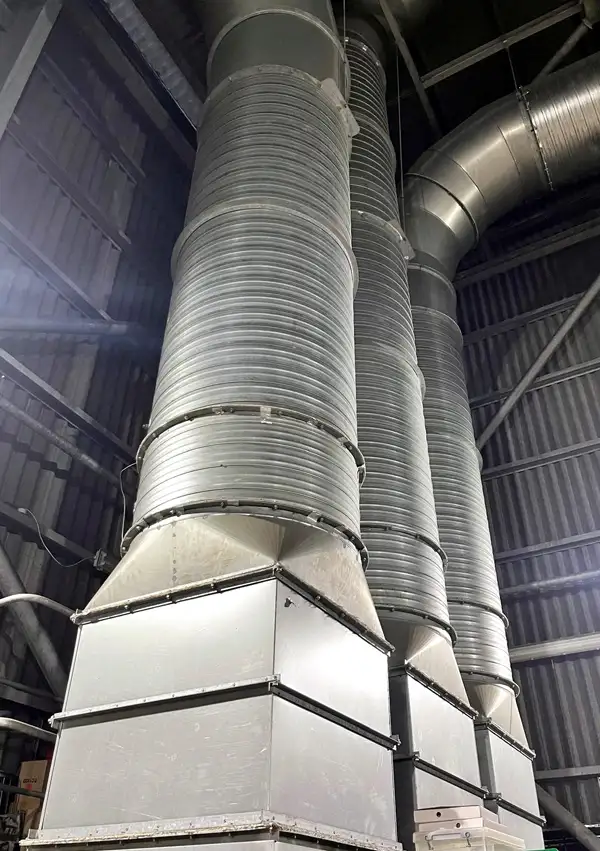
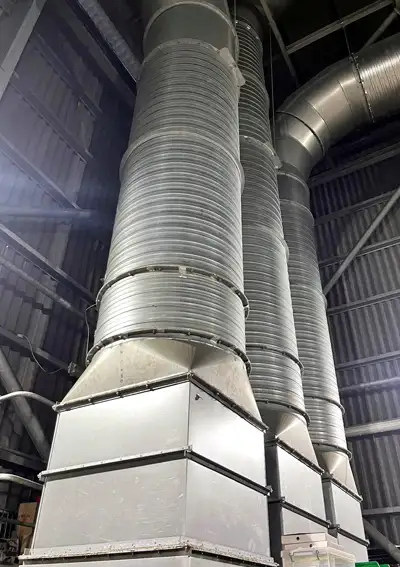
Why Choose CAT for your LEV Testing Services?
- HSE Compliant Testing - We ensure your LEV system meets all legal and regulatory requirements.
- Certified & Experienced Technicians - Our team of 20+ LEV technicians have numerous qualifications (all with a minimum BOHS P601), continued training (CPD) and extensive experience in LEV testing across a varied number of sectors.
- Detailed & Actionable Reports - We provide clear recommendations to improve systems, when required.
- Minimised Downtime - We work efficiently to conduct tests with minimal disruption to your operations.

